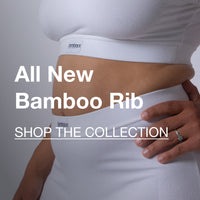Types of Fabrics - Everything You Need To Know

There are dozens of fun and unique types of fabric that manufacturers use to make different types of clothing, bed sheets, tablecloths, and more. Knowing about each one (or at least the more common ones) is so important when it comes to taking care of these fabrics, washing them, or even using them to make something yourself.
When you know about the types of fabric that you deal with on a regular basis, it helps you care for them so that they last longer, their lustrous colors don’t fade, and every other unfortunate thing that occurs with time or maltreatment. Even knowing the basics will make a world’s difference in how long your fabrics last.
With that said, we’re going to help give you a better understanding of the different types of fabrics. You’ll learn the basics and be a pro at taking care of your fabrics before you know it.
Different Fabrics Explained
Do you have your pen and paper ready? If so, let’s get started.
Cotton Fabric
First on our list is cotton. You can find this soft fabric in everything from apparel to your home decor, bath products, and more. This is one of the most popular types of fabric, and some consider it to be the most important of the natural textile fibers we use. In fact, as much as 40% of the fibers used worldwide are cotton.
This fabric is made up of fibers that come straight from the seeds of cotton plants. When shopping, you can find either regular cotton or organic cotton. One notable difference between the two is that organic cotton is kinder to the environment.
What Is Sustainable Cotton?
This type of fiber is both sustainable and versatile. It can be used to create knit fabric, woven fabric, and more. It’s a common feature of quilting and other crafting hobbies. Cotton is used to make unique fabrics like chino, muslin, chintz, and gingham.
It’s environmentally friendly because it has properties that make it sustainable, renewable, and biodegradable. Some of us have more sensitive skin that’s prone to irritation, rashes, and the like, so organic cotton would be a great fabric to use often. That’s because the cotton plants the seeds are pulled from don’t have any of the pesticides or harmful chemicals that farmers spray on regular cotton.
To look for the highest quality ethically produced cotton, look for the OEKO-TEX certification.
Cotton Thread Count
The thread counts of cotton can be as low as 100 and reach as high as 2,000. When a fabric’s thread count is high, that just means that there are more threads of fabric per square inch. But that doesn’t affect the material’s breathability.
Whether the thread count is 100 or 2,000, cotton has a high degree of breathability. That makes it perfect for preventing overheating. It allows air to pass through it easily and causes perspiration to flow outward through the fabric.
Cotton may also be moisture-wicking depending on the type. Moisture-wicking is slightly different in that it works specifically to move moisture quickly to the fabric’s outer layer and then dries just as quickly so that the fabric doesn’t oversaturate.
These qualities make it a wonderful fit for products like shirts, blouses, dresses, underwear, socks, blankets, sweaters, and more. You likely have all of these products and more that are made of cotton, so here are a couple of tips for washing and caring for them.
If you have cotton t-shirts, you’re probably familiar with the likelihood that it’s going to shrink after running through the washer and dryer. Luckily, there are a few things you can do to help prevent too much shrinkage.
How To Wash Cotton
Make sure to wash your cotton products in cold water. That’s going to be 86 degrees Fahrenheit (30 degrees Celsius) or lower. Once they finish in the washer, give those products a bit of a stretch before they dry.
Make sure you do not run them through the dryer. You should always air dry cotton products on lay or hang them flat. It’s better if they dry out in the sun.
When getting rid of wrinkles, try not to iron too often. If you follow our tips for drying, you shouldn’t have much of a problem with creasing. But, if you do need to iron, check the garment care label for directions on a safe temperature to use.
Silk
Now we go from one of the most common fabrics we use to one of the most beautiful. Almost nothing screams of luxury and elegance the way that silk does. It’s known for its use in formal apparel (gowns, dresses, ties, etc.), scarves, bedding, and upholstery. It’s harvested from the cocoons of silkworms.
This fabric has a softness, strength, and beauty that other fabrics can’t match. While silk fabric is one type amongst dozens, silk has variations in itself.
Let’s talk about each of those just a bit:
Chiffon
Chiffon is unique in its sheer quality, which makes it nearly transparent. While silk is generally soft, chiffon has a bit of a rough texture to it that comes from its twisted fibers. It is a lightweight fabric that creates shape and volume by adding lots of layers.
This makes it possible to have volume without weighing you down when you wear it. The layers create such a beautiful display that it’s usually used for special occasions.
Crêpe Fabric
Crêpe fabric is also different from typical silk in its texture. Rather than the smooth, soft feel, it has a wrinkled and bumpy look. Although its weight can vary, it tends to have either a light or medium weight.
Organza
Much like chiffon, organza is also sheer and lightweight. But it is different in that while chiffon is a stretchy fabric, organza is quite stiff. While you can find it on formal wear, we see it most on veils and facings.
Shantung
Shantung, or Tussah silk, is a fabric made up of short, coarse fibers. One great aspect of it is that it doesn’t often wrinkle, so it’s a good material for clothes specifically: shirts, dresses, pants, etc.
Those are just a couple of the wide variety of fabrics manufacturers make with silk. But let’s get back to silk in its most common form. Did you know that silk, another natural fiber, comes from silkworms?
Silkworms
One way we can gather silk for use in products is by harvesting them. Through a process called sericulture, we can take raw silk to weave and knit it into a fabric. To make one pound of raw silk, it takes more than 2,000 silkworms.
Once the raw silk is spun, the weaving process determines what kind of fabric it will be.
How To Care for Silk
You may think that silk is a delicate fabric to send off to the dry cleaners, but you may wash and care for it right at home (in some circumstances). Silk does need care, though, so be sure to wear gloves to be extra careful.
You can put your silk apparel through the washer on the delicate or gentle wash cycle. But, it is the safest option to handwash it in cold water to help prevent the color from fading, which is more than likely to happen with silk.
Steer clear of harsh detergents. Use any gentle detergent, and after adding detergent to the cold water, set the silk inside. Silk releases dirt rather easily and quickly, so there’s no need to scrub at all. Give it a stir in the detergent-filled water. After several minutes, you’ll be able to rinse it off.
When you’re drying, never put it through the dryer or wring it out. It’s best to use a padded hanger and hang it in the shade. The sun accelerates fading, so try to avoid setting it out within reach of its rays.
Linen
The next fabric on our list is linen. This fabric is a summer favorite because it’s one of the best for keeping you cool. Not only is it breathable, but it’s stiff, too. The stiff quality helps to keep the fabric from clinging to your skin. Just what we need throughout the warmest months of the year.
Whereas the two other fabrics we’ve talked about so far are common for use in clothing, linen is mostly used in products for the home. These products include towels, bags, napkins, bed linens, chair covers, and so on.
Linen vs. Cotton
Linen fabric is similar to cotton but is made from flax plant stems. To make linen, manufacturers extract fibers from those stems and spin them into yarn. Once that’s done, they weave the yarn into sheets of a line for a durable, soft, quick-drying material.
Although linen can make clothing, cotton has virtually replaced it on a wide scale. This is for several reasons. One is that the fabric is expensive to produce. The spinning process is rather difficult and each stage of the production process relies heavily on labor. Manufacturers find in most cases that cotton is a fantastic alternative.
Linen does happen to be a more popular choice for clothing in areas that are closer to the equator. These regions have much warmer weather, so many love linen for its remarkable ability for moisture-wicking. Another benefit of linen in hotter climates is that the fabric is naturally white, so clothing won’t absorb as much heat from the sun as clothing with darker colors do.
Rather surprisingly, linen is still used for lingerie, robes, nightgowns, and underwear. It used to be one of the most common fabrics for these kinds of products because it’s one of the few completely natural fabrics.
Moisture-Wicking
Bringing it back to its moisture-wicking ability, along with its breathability makes it a good fabric of choice for your lingerie while you’re vacationing with your significant other. Whether you’re visiting the beautiful beaches of Cancún or Jamaica, you’ll love how linen lingerie will help keep you feeling both sexy and refreshed.
How To Wash Linen
One advantage to choosing linen over cotton is that it is just as easy to clean while also being more durable. Cotton can get worn down after so many uses and washes, but linen is a more sustainable fabric.
Some think that linen is difficult to care for properly, but we’re here to tell you that you needn’t worry. You do not need to send your linen off to specialists to clean and care for them well. Just think about it: People were using linen for centuries before any of the technology we use to wash existed.
When you’re washing, make sure to avoid running them with any other fabrics. Especially avoid mixing linens with jeans or hoodies because you’ll run the risk of damaging the linens. One more thing to avoid is using hot water.
Lukewarm water and the gentle washing cycle are best for linens. Those topped off with a mild detergent will do just the job of removing any dirt.
The drying process is very similar to that of cotton. Avoid using high temperatures to avoid the possibility of shrinkage. When the dryer finishes its run, lay all of your linen out flat so that you can avoid any wrinkling or creases. You’ll have better odds of doing this if you remove them from the dryer while they’re still slightly damp.
There’s always the option of air drying as well. It’s the more eco-friendly and budget-friendly option.
Wool
Wool fabric is a natural fiber that comes from an animal’s fleece. You may have thought that wool only comes from sheep, but it can actually come from animals like goats, camels, rabbits, and more. In fact, the animal from which wool is made determines the specific kind of wool it is.
Producers make wool by first shearing one of the select few animals that carry them. After cleaning it, producers then start carding them. This is the process where they make long strands from the fibers. Producers then spin the strands into yarn and wash them again. Once this is done, the yarn can then be woven into different types of textiles.
There are different uses for wool, but they primarily pop up in outerwear. That includes formal suits, hats, gloves, sweaters, and more. These all have wool incorporated into them because this fabric is able to hold heat very well.
What Is Twisted Yarn?
Interestingly, twisted yarn is pretty different from its wool counterpart. Twisted yarn is made of silk, nylon, and polyester/rayon. This yarn type is critical in chiffon production — a light and airy fabric. Similar lightweight fabrics include georgette; these tend to be formal wear staples.
Insulation Powers of Wool
This insulation will definitely keep you warm when the temperature starts dropping around the fall. Although it has quality breathability, it works to keep your body heat from moving outward through the fabric by trapping it instead in between your body and its fibers. However, you likely won’t have to worry about overheating or sweating in it because it's also moisture-wicking.
Another beloved aspect of wool is that it’s extremely friendly to the environment. Producers can harvest wool without harming any of the animals that carry it and the animals continue to regrow it. It’s also biodegradable and recyclable so that we can repurpose it for use as something else.
Whether wool is in sweaters or pants, it has just enough give for you to be comfortable while you’re moving about. Winter months are for layering, and we all know how stiff our movements can become with two tops and the necessary coat to keep warm. But wool will help make those movements easier while walking the streets of the city to get to work.
What Are the Different Types of Wool?
Now let’s get into a few of the different types of wool:
- Cashmere
- Mohair
- Alpaca
Cashmere
Cashmere is one of the softest kinds of wool. It has extremely fine fibers that can compare to silk. These fibers come from cashmere and pashmina goats, and their production is such a lengthy process that products made with cashmere are very costly.
Since it’s so lightweight, when producers want to make a heavier product, they blend it with other kinds of wool, which is commonly seen in blankets and throws. Cashmere home goods can be some of the softest, warmest, and most luxurious fabrics you’ll find.
Mohair
Mohair wool comes from Angora goats. Its use can be traced all the way back to eighth-century England. That means it was likely traded across civilizations in Europe and Asia. It may have been popular because its texture is softer than sheep wool and has a bit of a glow to it.
Mohair is different from cashmere in home goods. It’s used more often in carpets, rugs, and wall hanging. So, it’s not luxurious the way cashmere is, but it’s still considered valuable for the products it uses.
Alpaca Wool
Now for alpaca wool. As you can tell from the name, it’s made from alpaca hair. The fibers of this fabric are much warmer and stronger than sheep wool–up to five times so. What causes its heightened heat retention are air pockets in each fiber that lets it trap heat inside.
Alpaca wool is especially popular for hand-knitting. Many people like to use it to knit or crochet sweaters, scarves, socks, and more. It’s famous for coming in so many variations: 22 colors.
When you’re cleaning wool, the washer machine is the most convenient way to do it. Turn wool clothes inside out before throwing them inside. Set the washer on the delicate cycle using cold water and a gentle detergent. Make sure to add on an extra rinse cycle.
Wool also has the capability of shrinking, so do not run it through the dryer. Just like cotton and linen, you should lay it out flat to dry.
Rayon
Every fabric we’ve talked about so far has been a natural fiber, but there is also a category of synthetic fabric that has synthetic fibers. The next fabric we’re going to talk about is rayon, which is a hybrid fabric; it’s a semi-synthetic fiber.
That means that part of it is natural (it’s made from naturally-occurring polymers), but it goes through some sort of chemical processing that makes it a manufactured fabric. The natural component of rayon comes from beech trees and bamboo. The material that the fibers come from is called “wood pulp.”
Other fabrics, like TENCEL™ Modal, are made from ethically grown beechwood and are even softer than cotton.
How Is Rayon Made?
To make it, producers will take wood pulp pulled from either of the trees that carry it and then start a five-step chemical process that eventually turns it into fibers. Just like every other fabric, those fibers are spun to then produce filaments of rayon.
Rayon is similar to cotton in comfort level. It’s smooth and soft to the touch. But it’s different in that it has a sheen to it. Depending on the production process, it can have a soft shine or a bright glow.
It’s also known for being a loose and flowing fabric. People have even nicknamed it a “fluid drape” because of its similarity to liquid in the way that it seems to flow.
Something that makes it great for sportswear is that it is both breathable and absorbent. It doesn’t retain heat the way a lot of fabrics tend to, so that aspect of it will keep you cool. Then it’s able to absorb moisture off of your skin, further cooling you down as you sweat throughout your workout.
How To Care for Rayon
When it’s used in clothing, rayon is often blended with other fabrics. Because of this, directions for washing it can vary depending on the fabric that is blended in with it. That’s why it’s essential to carefully read each product’s washing instructions and follow them as closely as possible.
Unlike many of the other fabrics we’ve discussed, rayon isn’t very durable. If you’re not careful, running it through the washing machine can damage it by stretching, shrinking, or causing it to bleed.
However you choose to wash it, do not run it through the dryer. It’s very likely that the rayon will be altered in some way, so the safer option is to lay it out flat to let it air dry.
Elastane
Known for being one of the most comfortable fabrics to wear, whether you’re active or lounging, elastane is the last fabric we’re discussing today. The two popular elastane types you’ve seen are Spandex and lycra. Elastane is a completely synthetic material, so you won’t find any of the fibers or materials in elastane out in nature.
Elastic Properties
The most common use for elastane is in undergarments and in sportswear. Designers mostly use it for its elasticity (or its stretchiness). In just about every kind of underwear that is form fitting, elastane is a major component as far as the material designers use.
Products made with elastane tend to look smaller than what would typically fit you, but designers do this knowing that the elastane will stretch to the size you need it to be.
Clothes That Stretch
A perfect example of elastane in undergarments is in boxer briefs. A good pair of boxer briefs can even have just a hint of elastane (or Spandex). Depending on the feel the designer is going for, it may use mostly cotton. But it will almost always incorporate elastane to ensure a snug fit and to keep them from sliding.
Elastane is also popular in tops. Just like this compression top that is made of 41% elastane. Compression tops are meant to minimize breast movement by pressing them in towards the body. This compression top is able to do this because of its use of elastane.
A fan favorite that implements elastane or Spandex are leggings. One example of a soft, comfortable pair of leggings that use 22% Spandex is The Only ¾ Legging. They’re form-fitting without any discomfort that can come with snug apparel.
How To Wash Elastane and Spandex
Taking care of your elastane and Spandex will help them last as long as possible. As always, make sure to follow the instructions on the care label because they may vary depending on the fabrics they’re blended with.
When you’re washing, it is safe for you to use a washing machine, but be extra careful to keep the material from tearing by putting them in a mesh washing bag. Sometimes they can get caught on something throughout the wash, but the mesh washing bag will prevent any damage.
Select the delicate washing cycle, use cool water, and add in however much gentle detergent you might need. After the wash, you should set them out to air dry because the dryer can reduce their elasticity.
Let’s Wrap It Up
There are even blends of fabrics to learn about, but they’re more than we can count! But we have now covered all of the basics so that you know more about your clothes and what you need to do to care for them well.
It may be a bit more laboring than throwing all of your clothes together in the washer and dryer, but you’ll be thankful that you did take the time once you notice your clothes are looking nicer and still fitting well after time passes.
Sources:
Cotton Fibers and its Properties | Textile School
sericulture | silk production | Britannica
rayon | textile fibre | Britannica
How to Clean and Care for Wool and Cashmere Clothing | Spruce






